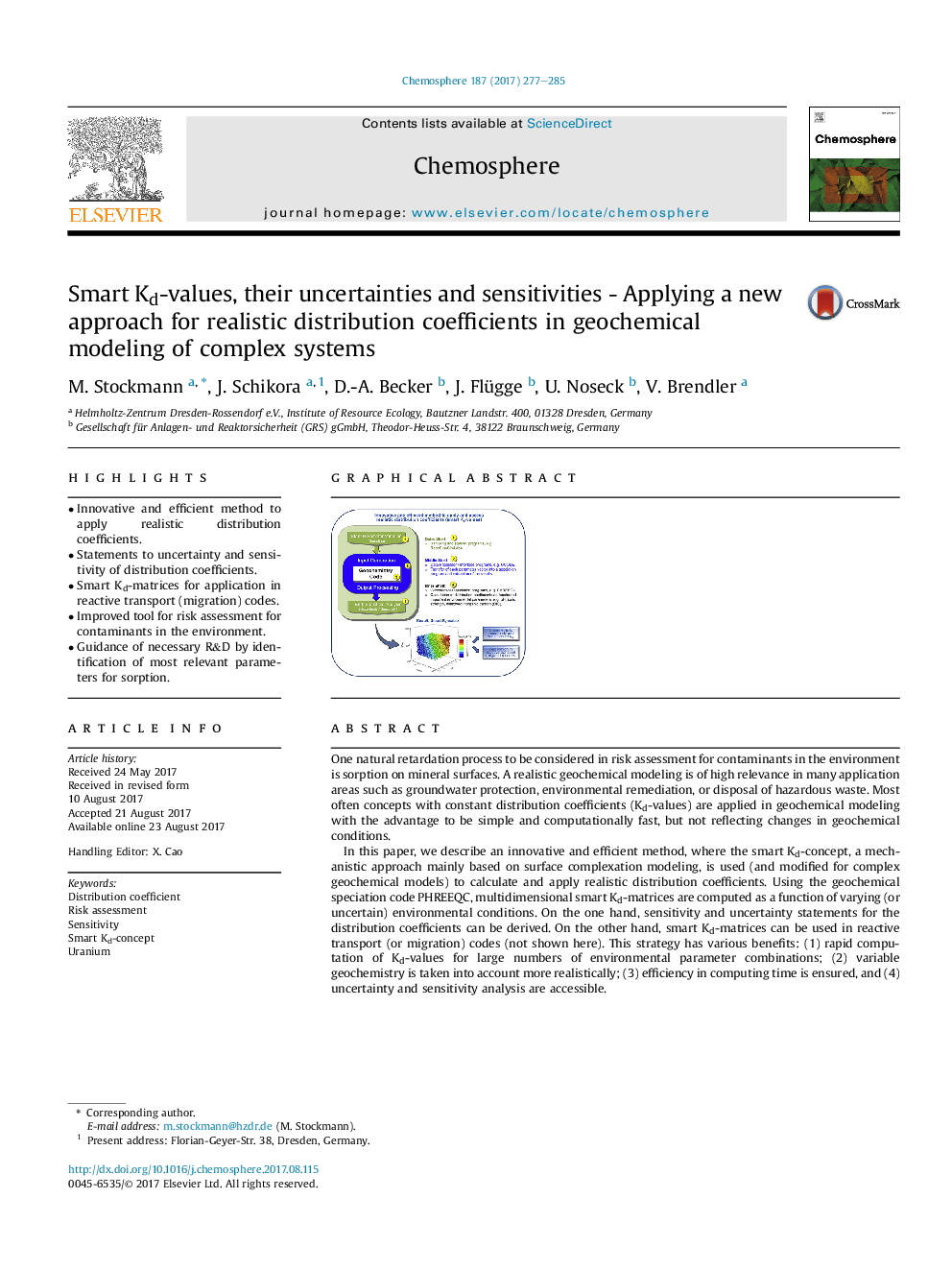| Article ID | Journal | Published Year | Pages | File Type |
|---|---|---|---|---|
| 5746423 | Chemosphere | 2017 | 9 Pages |
â¢Innovative and efficient method to apply realistic distribution coefficients.â¢Statements to uncertainty and sensitivity of distribution coefficients.â¢Smart Kd-matrices for application in reactive transport (migration) codes.â¢Improved tool for risk assessment for contaminants in the environment.â¢Guidance of necessary R&D by identification of most relevant parameters for sorption.
One natural retardation process to be considered in risk assessment for contaminants in the environment is sorption on mineral surfaces. A realistic geochemical modeling is of high relevance in many application areas such as groundwater protection, environmental remediation, or disposal of hazardous waste. Most often concepts with constant distribution coefficients (Kd-values) are applied in geochemical modeling with the advantage to be simple and computationally fast, but not reflecting changes in geochemical conditions.In this paper, we describe an innovative and efficient method, where the smart Kd-concept, a mechanistic approach mainly based on surface complexation modeling, is used (and modified for complex geochemical models) to calculate and apply realistic distribution coefficients. Using the geochemical speciation code PHREEQC, multidimensional smart Kd-matrices are computed as a function of varying (or uncertain) environmental conditions. On the one hand, sensitivity and uncertainty statements for the distribution coefficients can be derived. On the other hand, smart Kd-matrices can be used in reactive transport (or migration) codes (not shown here). This strategy has various benefits: (1) rapid computation of Kd-values for large numbers of environmental parameter combinations; (2) variable geochemistry is taken into account more realistically; (3) efficiency in computing time is ensured, and (4) uncertainty and sensitivity analysis are accessible.Results are presented exemplarily for the sorption of uranium(VI) onto a natural sandy aquifer material and are compared to results based on the conventional Kd-concept. In general, the sorption behavior of U(VI) in dependence of changing geochemical conditions is described quite well.
Graphical abstractDownload high-res image (232KB)Download full-size image
